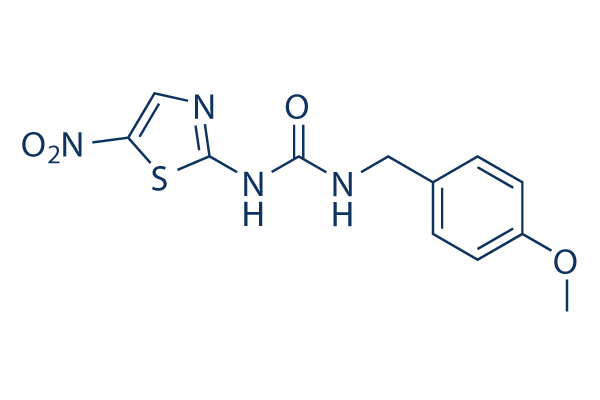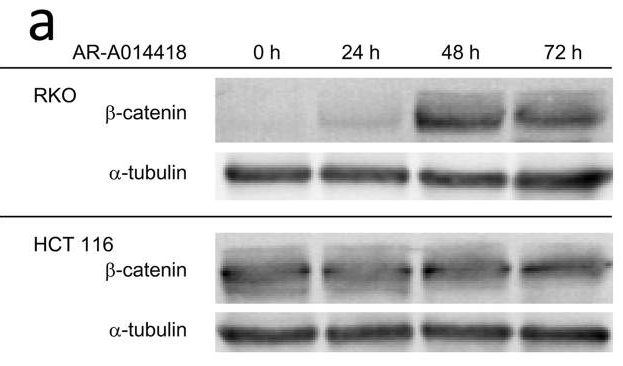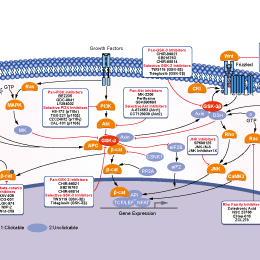
- Bioactive Compounds
- By Signaling Pathways
- PI3K/Akt/mTOR
- Epigenetics
- Methylation
- Immunology & Inflammation
- Protein Tyrosine Kinase
- Angiogenesis
- Apoptosis
- Autophagy
- ER stress & UPR
- JAK/STAT
- MAPK
- Cytoskeletal Signaling
- Cell Cycle
- TGF-beta/Smad
- DNA Damage/DNA Repair
- Compound Libraries
- Popular Compound Libraries
- Customize Library
- Clinical and FDA-approved Related
- Bioactive Compound Libraries
- Inhibitor Related
- Natural Product Related
- Metabolism Related
- Cell Death Related
- By Signaling Pathway
- By Disease
- Anti-infection and Antiviral Related
- Neuronal and Immunology Related
- Fragment and Covalent Related
- FDA-approved Drug Library
- FDA-approved & Passed Phase I Drug Library
- Preclinical/Clinical Compound Library
- Bioactive Compound Library-I
- Bioactive Compound Library-Ⅱ
- Kinase Inhibitor Library
- Express-Pick Library
- Natural Product Library
- Human Endogenous Metabolite Compound Library
- Alkaloid Compound LibraryNew
- Angiogenesis Related compound Library
- Anti-Aging Compound Library
- Anti-alzheimer Disease Compound Library
- Antibiotics compound Library
- Anti-cancer Compound Library
- Anti-cancer Compound Library-Ⅱ
- Anti-cancer Metabolism Compound Library
- Anti-Cardiovascular Disease Compound Library
- Anti-diabetic Compound Library
- Anti-infection Compound Library
- Antioxidant Compound Library
- Anti-parasitic Compound Library
- Antiviral Compound Library
- Apoptosis Compound Library
- Autophagy Compound Library
- Calcium Channel Blocker LibraryNew
- Cambridge Cancer Compound Library
- Carbohydrate Metabolism Compound LibraryNew
- Cell Cycle compound library
- CNS-Penetrant Compound Library
- Covalent Inhibitor Library
- Cytokine Inhibitor LibraryNew
- Cytoskeletal Signaling Pathway Compound Library
- DNA Damage/DNA Repair compound Library
- Drug-like Compound Library
- Endoplasmic Reticulum Stress Compound Library
- Epigenetics Compound Library
- Exosome Secretion Related Compound LibraryNew
- FDA-approved Anticancer Drug LibraryNew
- Ferroptosis Compound Library
- Flavonoid Compound Library
- Fragment Library
- Glutamine Metabolism Compound Library
- Glycolysis Compound Library
- GPCR Compound Library
- Gut Microbial Metabolite Library
- HIF-1 Signaling Pathway Compound Library
- Highly Selective Inhibitor Library
- Histone modification compound library
- HTS Library for Drug Discovery
- Human Hormone Related Compound LibraryNew
- Human Transcription Factor Compound LibraryNew
- Immunology/Inflammation Compound Library
- Inhibitor Library
- Ion Channel Ligand Library
- JAK/STAT compound library
- Lipid Metabolism Compound LibraryNew
- Macrocyclic Compound Library
- MAPK Inhibitor Library
- Medicine Food Homology Compound Library
- Metabolism Compound Library
- Methylation Compound Library
- Mouse Metabolite Compound LibraryNew
- Natural Organic Compound Library
- Neuronal Signaling Compound Library
- NF-κB Signaling Compound Library
- Nucleoside Analogue Library
- Obesity Compound Library
- Oxidative Stress Compound LibraryNew
- Plant Extract Library
- Phenotypic Screening Library
- PI3K/Akt Inhibitor Library
- Protease Inhibitor Library
- Protein-protein Interaction Inhibitor Library
- Pyroptosis Compound Library
- Small Molecule Immuno-Oncology Compound Library
- Mitochondria-Targeted Compound LibraryNew
- Stem Cell Differentiation Compound LibraryNew
- Stem Cell Signaling Compound Library
- Natural Phenol Compound LibraryNew
- Natural Terpenoid Compound LibraryNew
- TGF-beta/Smad compound library
- Traditional Chinese Medicine Library
- Tyrosine Kinase Inhibitor Library
- Ubiquitination Compound Library
-
Cherry Picking
You can personalize your library with chemicals from within Selleck's inventory. Build the right library for your research endeavors by choosing from compounds in all of our available libraries.
Please contact us at info@selleckchem.com to customize your library.
You could select:
- Antibodies
- Bioreagents
- qPCR
- 2x SYBR Green qPCR Master Mix
- 2x SYBR Green qPCR Master Mix(Low ROX)
- 2x SYBR Green qPCR Master Mix(High ROX)
- Protein Assay
- Protein A/G Magnetic Beads for IP
- Anti-Flag magnetic beads
- Anti-Flag Affinity Gel
- Anti-Myc magnetic beads
- Anti-HA magnetic beads
- Poly DYKDDDDK Tag Peptide lyophilized powder
- Protease Inhibitor Cocktail
- Protease Inhibitor Cocktail (EDTA-Free, 100X in DMSO)
- Phosphatase Inhibitor Cocktail (2 Tubes, 100X)
- Cell Biology
- Cell Counting Kit-8 (CCK-8)
- Animal Experiment
- Mouse Direct PCR Kit (For Genotyping)
- New Products
- Contact Us
research use only
AR-A014418 GSK-3 inhibitor
AR-A014418 (GSK-3β Inhibitor VIII) is an ATP-competitive, and selective GSK3β inhibitor with IC50 and Ki of 104 nM and 38 nM in cell-free assays, without significant inhibition on 26 other kinases tested.

Chemical Structure
Molecular Weight: 308.31
Purity & Quality Control
Batch:
Purity:
99.76%
99.76
Related Products
| Related Targets | GSK-3α GSK-3β | Click to Expand |
|---|---|---|
| Related Products | CHIR-99021 (Laduviglusib) Laduviglusib (CHIR-99021) Hydrochloride SB216763 TWS119 CHIR-98014 BIO LY2090314 Tideglusib SB415286 1-Azakenpaullone IM-12 CP21R7 TDZD-8 Indirubin (NSC 105327) AZD2858 AZD1080 BIO-acetoxime Bikinin | Click to Expand |
| Related Compound Libraries | Kinase Inhibitor Library PI3K/Akt Inhibitor Library Apoptosis Compound Library Cell Cycle compound library NF-κB Signaling Compound Library | Click to Expand |
Signaling Pathway
Cell Culture and Working Concentration
| Cell Lines | Assay Type | Concentration | Incubation Time | Formulation | Activity Description | PMID |
|---|---|---|---|---|---|---|
| human BxPC3 cells | Growth inhibition assay | 72 h | Growth inhibition of human BxPC3 cells after 72 hrs by MTS assay, IC50=14 μM | |||
| human HUPT3 cells | Growth inhibition assay | 72 h | Growth inhibition of human HUPT3 cells after 72 hrs by MTS assay, IC50=22 μM | |||
| human MIAPaCa2 cells | Growth inhibition assay | 72 h | Growth inhibition of human MIAPaCa2 cells after 72 hrs by MTS assay, IC50=29 μM | |||
| Click to View More Cell Line Experimental Data | ||||||
Mechanism of Action
| Features | Cell-permeable GSK3-selective inhibitor. | ||||
|---|---|---|---|---|---|
| Targets |
|
In vitro |
||||
| In vitro | AR-A014418 inhibits tau phosphorylation at a GSK3-specific site (Ser-396) in 3T3 fibroblasts expressing human four-repeat tau protein with IC50 of 2.7 μM, and protects cultured N2A cells from death induced by blocking PI3K/PKB pathway. In hippocampal slices, this compound inhibits neurodegeneration mediated by beta-amyloid peptide. [1] While in NGP and SH-5Y-SY cells, this chemical reduces neuroendocrine markers and suppresses neuroblastoma cell growth. [2] | |||
|---|---|---|---|---|
| Kinase Assay | GSK3 Scintillation Proximity Assay | |||
| The competition experiments are carried out in duplicate with 10 concentrations of the inhibitor in clear-bottomed microtiter plates. The biotinylated peptide substrate, biotin-AAEELDSRAGS(PO3H2)PQL, is added at a final concentration of 2 μM in an assay buffer containing 6 milliunits of recombinant human GSK3 (equal mix of both α and β), 12 mM MOPS, pH 7.0, 0.3 mM EDTA, 0.01% β-mercaptoethanol, 0.004% Brij 35, 0.5% glycerol, and 0.5 μg of bovine serum albumin/25 μl and preincubated for 10-15 min. The reaction is initiated by the addition of 0.04 μCi of [γ-33P]ATP and unlabeled ATP in 50 mM Mg(Ac)2 to a final concentration of 1 μM ATP and assay volume of 25 μl. Blank controls without peptide substrate are used. After incubation for 20 min at room temperature, each reaction is terminated by the addition of 25 μl of stop solution containing 5 mM EDTA, 50 μM ATP, 0.1% Triton X-100, and 0.25 mg of streptavidin-coated SPA beads corresponding to ∼35 pmol of binding capacity. After 6 h the radioactivity is determined in a liquid scintillation counter. Inhibition curves are analyzed by non-linear regression using GraphPad Prism. | ||||
| Cell Research | Cell lines | N2A cells | ||
| Concentrations | ~50 μM | |||
| Incubation Time | 24 h | |||
| Method | Cell viability is assessed by calcein/propidium iodide uptake. Calcein AM is taken up and cleaved by esterases present within living cells, yielding yellowish-green fluorescence, whereas PI is only taken up by dead cells, which become orange-red fluorescent. In brief, N2A cells are cultured for 2 days in vitro and then treated with 50 μM LY-294002 in the presence of AR-A014418 or vehicle (DMSO) for 24 h. Subsequently, N2A cells are incubated for 30 min with 2 μM PI and 1 μM calcein-AM. The cultures are then rinsed three times with Hanks' buffered saline solution containing 2 mM CaCl2, and the cells are visualized by fluorescence microscopy using a Zeiss Axiovert 135 microscope. Three fields (selected at random) are analyzed per well (∼300 cells/field) in at least three different experiments. Cell death is expressed as percentage of PI-positive cells from the total number of cells. In every experiment, specific cell death is obtained after subtracting the number of dead cells present in vehicle-treated cultures. |
|||
| Experimental Result Images | Methods | Biomarkers | Images | PMID |
| Western blot | β-catenin β-catenin / GSK3α / GSK3β / Notch1 TAK1 / TAB1 / TAB2 / p-p65 / p65 |

|
26292722 | |
| Growth inhibition assay | Cell viability |

|
26292722 | |
In Vivo |
||
| In vivo | In ALS mouse model with the G93A mutant human SOD1, AR-A014418 (0-4 mg/kg, i.p.) delays the onset of symptoms, improves motor activity, slows down disease progression, and postpons the endpoint of the disease. [3] In addition, this compound produces inhibition effect on acetic acid- and formalin-induced nociception in mice by modulating NMDA and metabotropic receptor signaling as well as TNF-α and IL-1β transmission in the spinal cord. [4] | |
|---|---|---|
| Animal Research | Animal Models | ALS mouse model with the G93A mutant human SOD1 |
| Dosages | ~4 mg/kg | |
| Administration | i.p. | |
References |
|
Chemical Information
| Molecular Weight | 308.31 | Formula | C12H12N4O4S |
| CAS No. | 487021-52-3 | SDF | Download SDF |
| Synonyms | GSK-3β Inhibitor VIII | ||
| Smiles | COC1=CC=C(C=C1)CNC(=O)NC2=NC=C(S2)[N+](=O)[O-] | ||
Storage and Stability
| Storage (From the date of receipt) | |||
|
In vitro |
DMSO : 61 mg/mL ( (197.85 mM) Moisture-absorbing DMSO reduces solubility. Please use fresh DMSO.) Water : Insoluble Ethanol : Insoluble |
Molecular Weight Calculator |
|
In vivo Add solvents to the product individually and in order. |
In vivo Formulation Calculator |
|||||
Preparing Stock Solutions
Molarity Calculator
In vivo Formulation Calculator (Clear solution)
Step 1: Enter information below (Recommended: An additional animal making an allowance for loss during the experiment)
mg/kg
g
μL
Step 2: Enter the in vivo formulation (This is only the calculator, not formulation. Please contact us first if there is no in vivo formulation at the solubility Section.)
% DMSO
%
% Tween 80
% ddH2O
%DMSO
%
Calculation results:
Working concentration: mg/ml;
Method for preparing DMSO master liquid: mg drug pre-dissolved in μL DMSO ( Master liquid concentration mg/mL, Please contact us first if the concentration exceeds the DMSO solubility of the batch of drug. )
Method for preparing in vivo formulation: Take μL DMSO master liquid, next addμL PEG300, mix and clarify, next addμL Tween 80, mix and clarify, next add μL ddH2O, mix and clarify.
Method for preparing in vivo formulation: Take μL DMSO master liquid, next add μL Corn oil, mix and clarify.
Note: 1. Please make sure the liquid is clear before adding the next solvent.
2. Be sure to add the solvent(s) in order. You must ensure that the solution obtained, in the previous addition, is a clear solution before proceeding to add the next solvent. Physical methods such
as vortex, ultrasound or hot water bath can be used to aid dissolving.
Tech Support
Answers to questions you may have can be found in the inhibitor handling instructions. Topics include how to prepare stock solutions, how to store inhibitors, and issues that need special attention for cell-based assays and animal experiments.
Tel: +1-832-582-8158 Ext:3
If you have any other enquiries, please leave a message.
* Indicates a Required Field






































